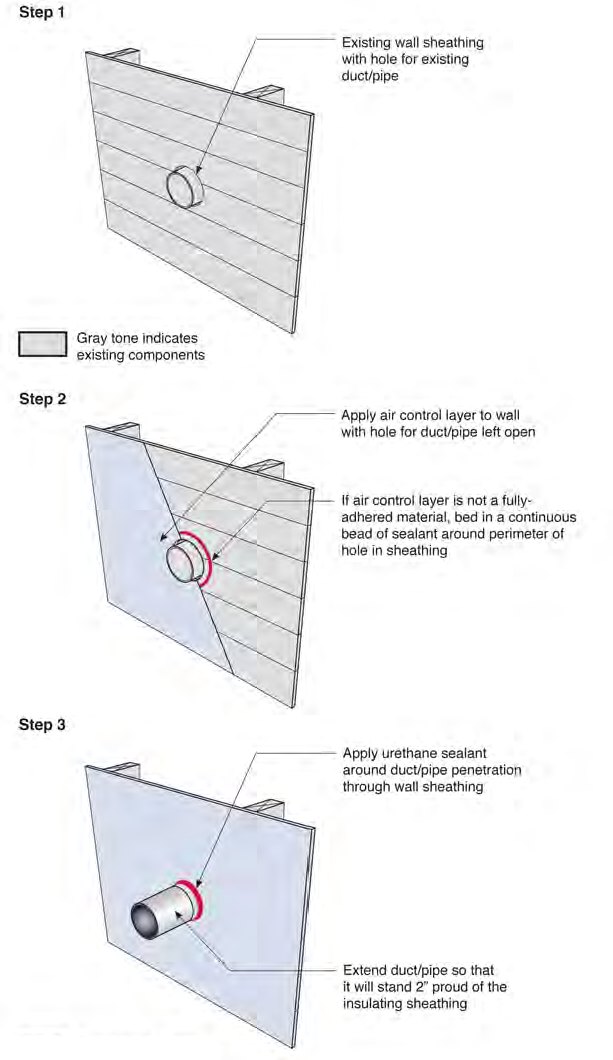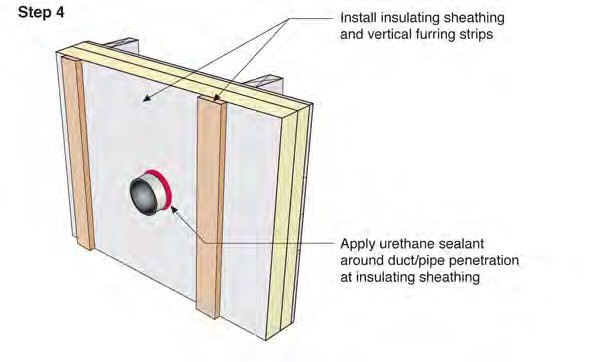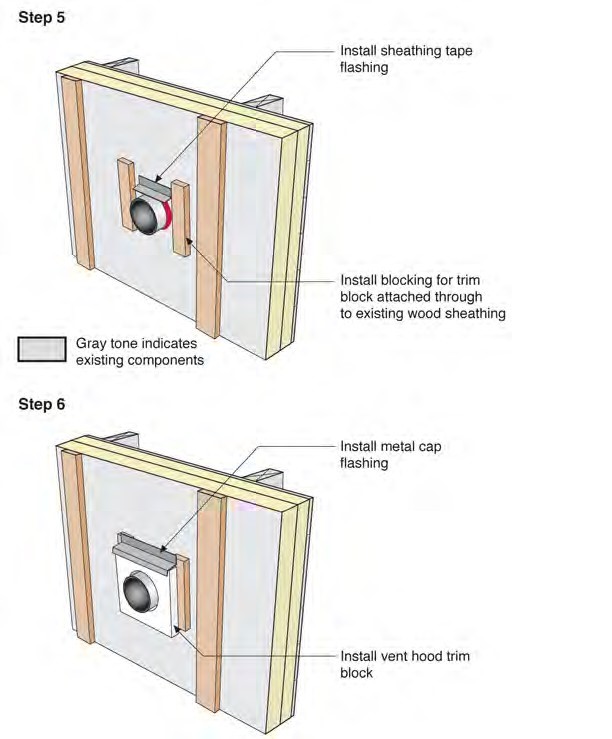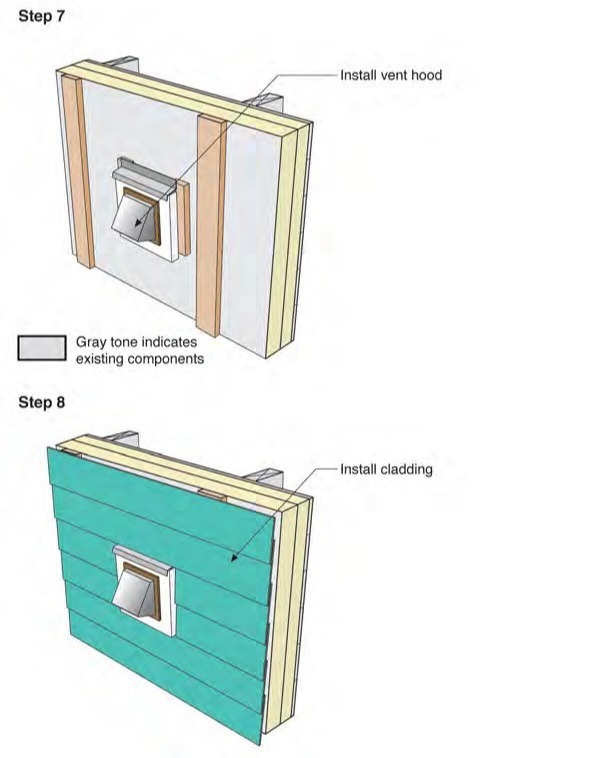Wall 1A Interruptions
In this retrofit wall assembly, the water control layer is the outer face of the insulating sheathing. Therefore all of the flashing details must connect to the face of the insulating sheathing. Air sealing is needed at other layers.
Wall 1A Porch and Deck Connections
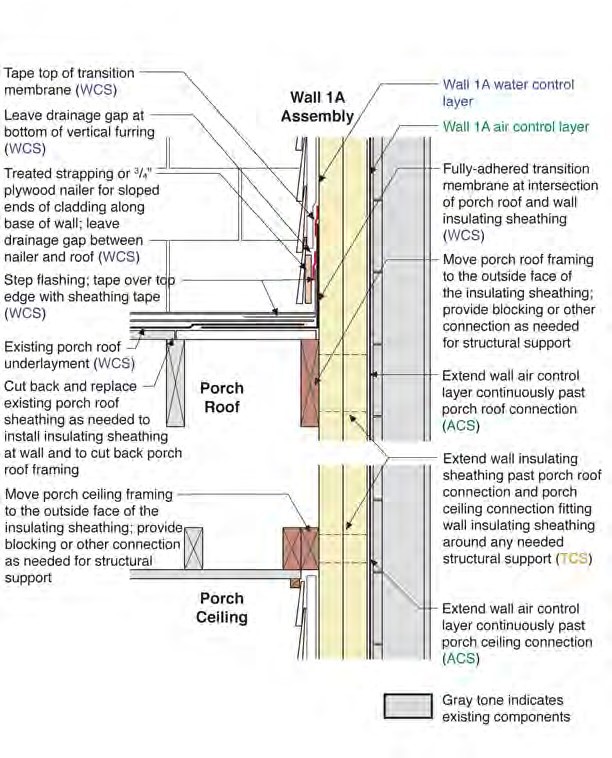
Porch Roof/Ceiling Connection to Wall 1A
- The porch roof and ceiling are separated from the existing wall structure to allow a continuous wall air control layer and insulating sheathing between the porch roof/ ceiling and the wall.
- Reattaching the porch roof structure may require engineered support connection or independent support.
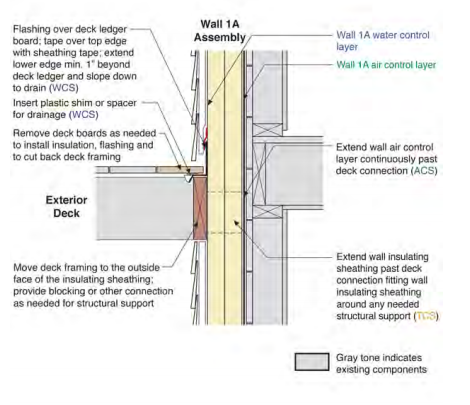
Deck Connection to Field of Wall 1A
- The deck is separated from the wall structure to allow a continuous wall air control layer and insulating sheathing between the deck and the wall.
- Reattaching the deck structure may require engineered support connection or independent support.
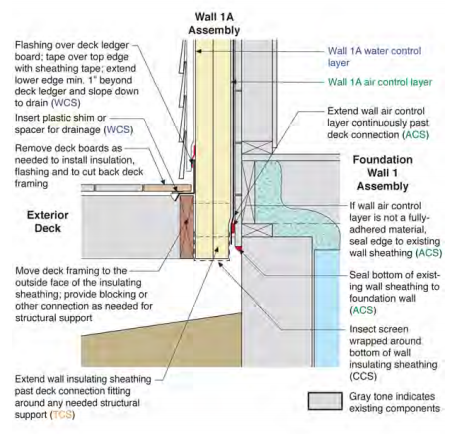
Deck Connection to Base of Wall 1A
- The deck is separated from the wall structure to allow a continuous wall air control layer and insulating sheathing between the deck and the wall.
- Reattaching the deck structure may require engineered support connection or independent support.
Wall 1A Windows and Doors
There are two kinds of windows-windows that leak, windows that will leak. This can be said of doors as well. Because of this, it is necessary to flash the window or door opening such that it is a drained opening - when the window or door leaks, water is controlled and the wall system is protected. Sill pan flashing, jamb flashing and head flashing form the water control system for the opening. The sill pan flashing is especially tricky because it must conform to the three dimensional corner configuration at the intersection of the sill and jamb of the opening. Also window and door frames tend to have sharp corners - if the sill pan flashing is not tight to the corner of the opening, the window or door frame could cause a tear in the flashing precisely at the most vulnerable location of the opening. For this reason, one should not attempt to provide pan flashing with flat peel-and-stick membranes. The corners of the sill pan flashing should be executed with pre-manufactured corner flashing, liquid-applied flashing membrane, or flexible flashing membrane.
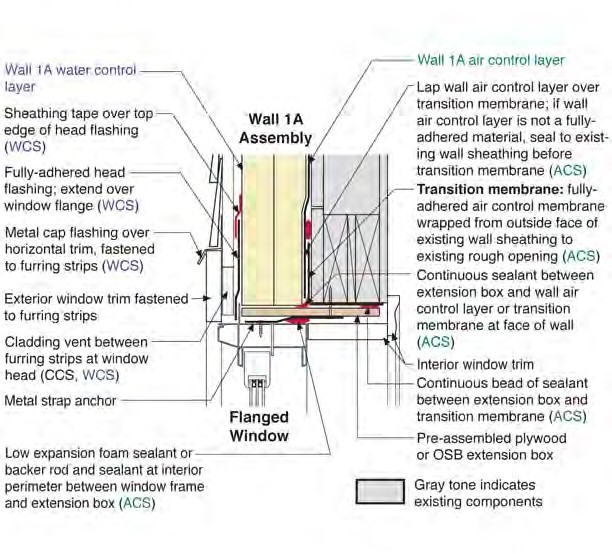
Flanged Window with Extension Box in Wall 1A-Head
- The pre-assembled extension box is described in Flanged Window with Extension Box-Installation Sequence.
- Also see Flanged Window with Extension Box in Wall 1A - Installation Sequence.
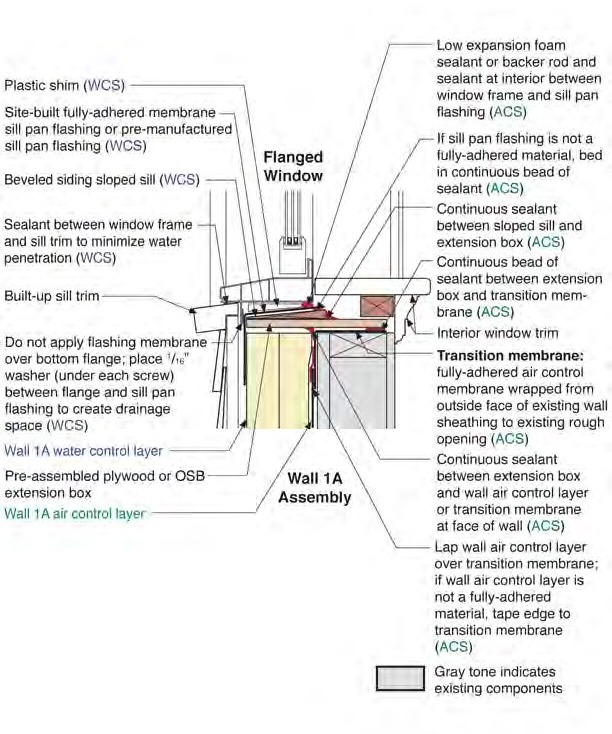
Flanged Window with Extension Box in Wall 1A-Sill
- The pre-assembled extension box is described in Flanged Window with Extension Box-Installation Sequence.
- Also see Flanged Window with Extension Box in Wall 1A - Installation Sequence.
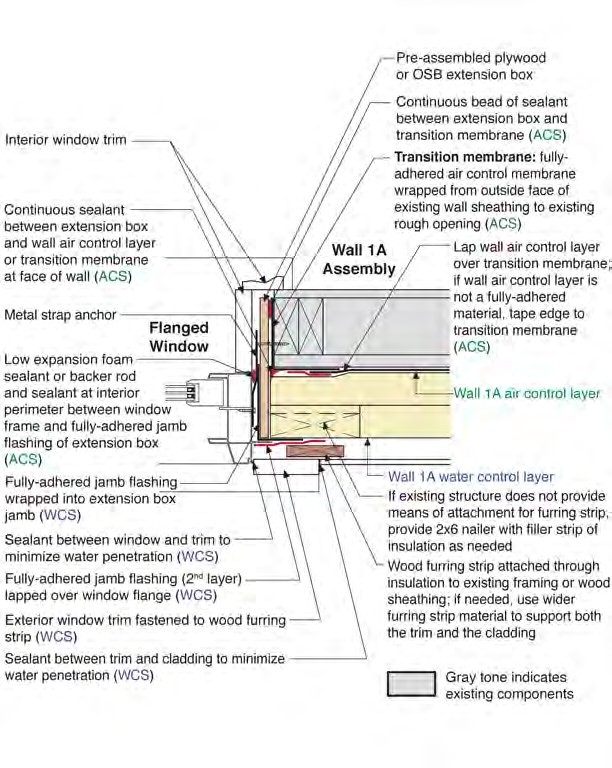
Flanged Window with Extension Box in Wall 1A-Jamb
- The pre-assembled extension box is described in Flanged Window with Extension Box-Installation Sequence.
- Also see Flanged Window with Extension Box in Wall 1A - Installation Sequence.
Flanged Window with Extension Box in Wall 1A-Installation Sequence
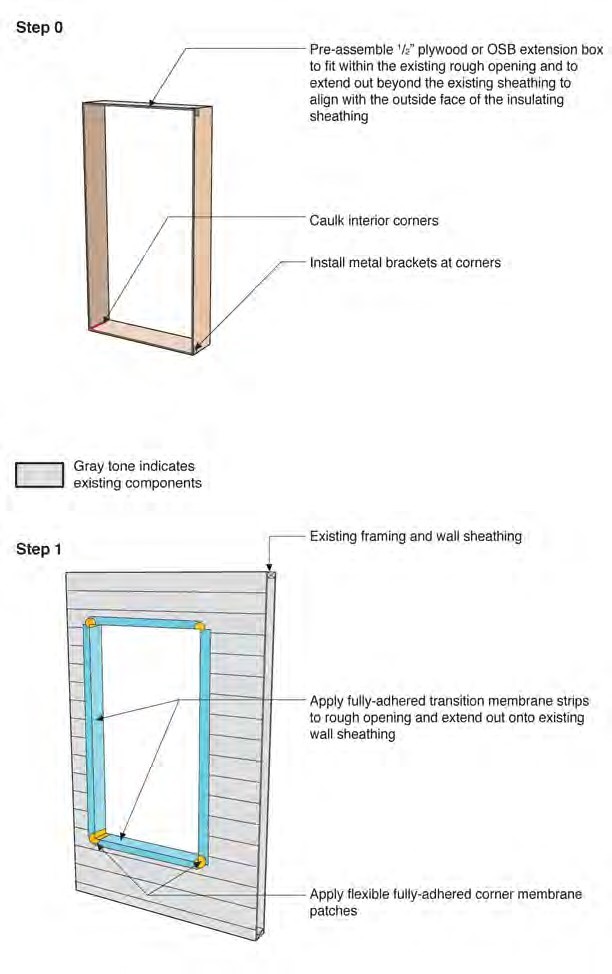
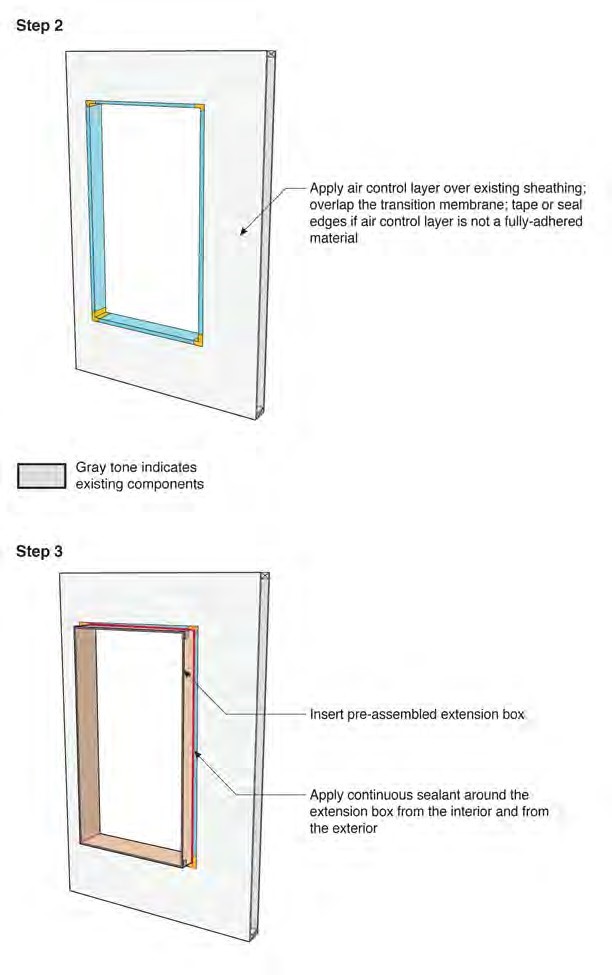
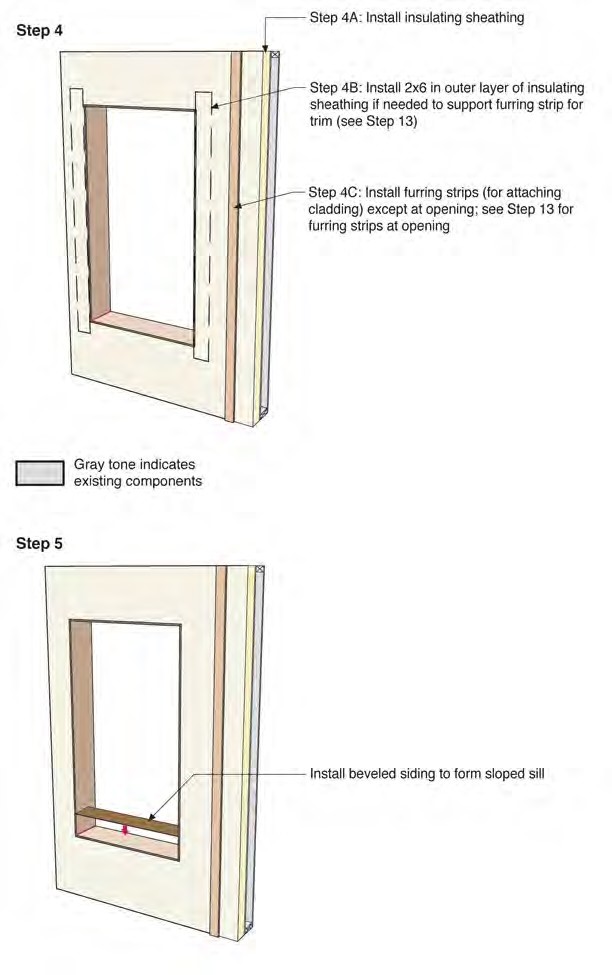
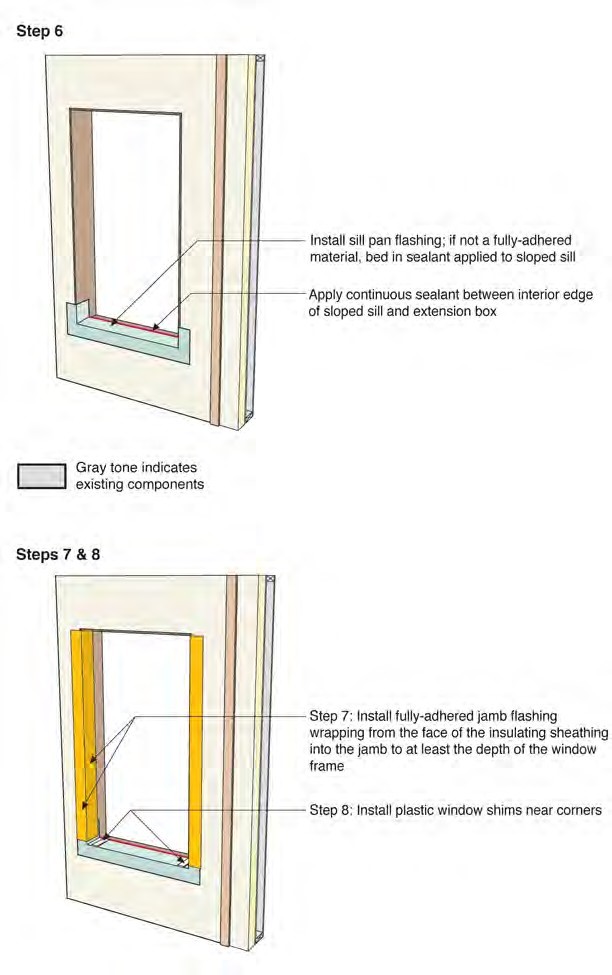
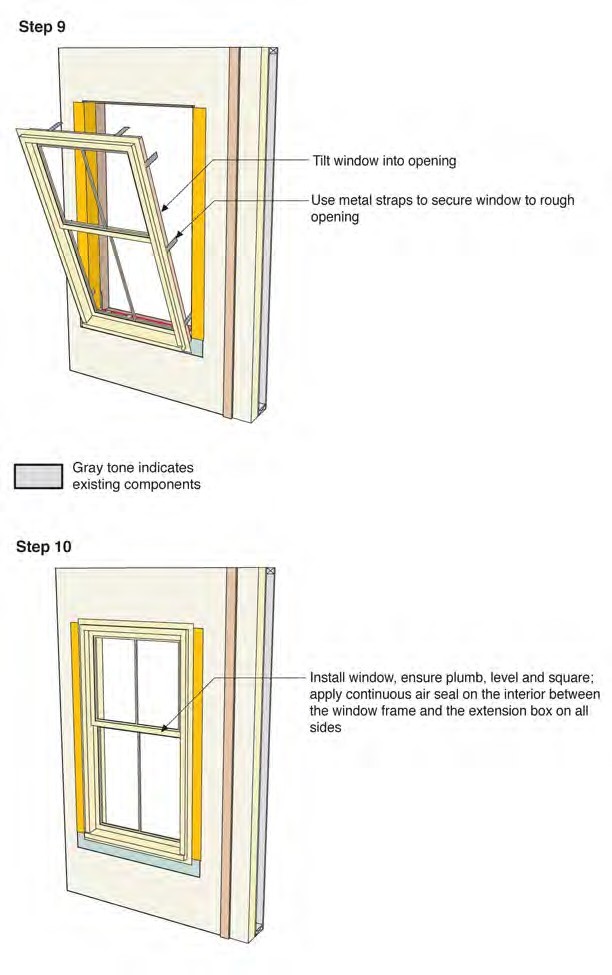
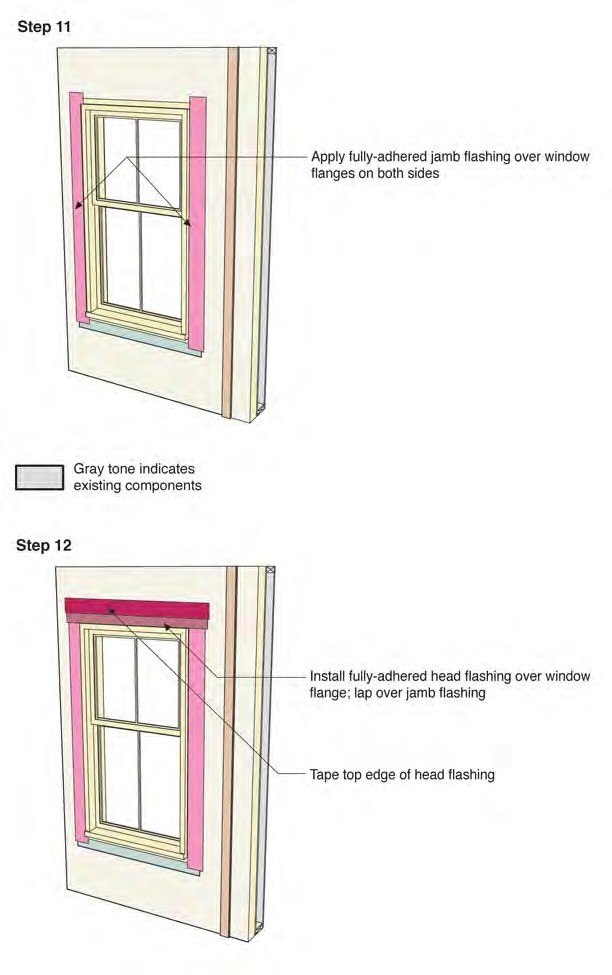
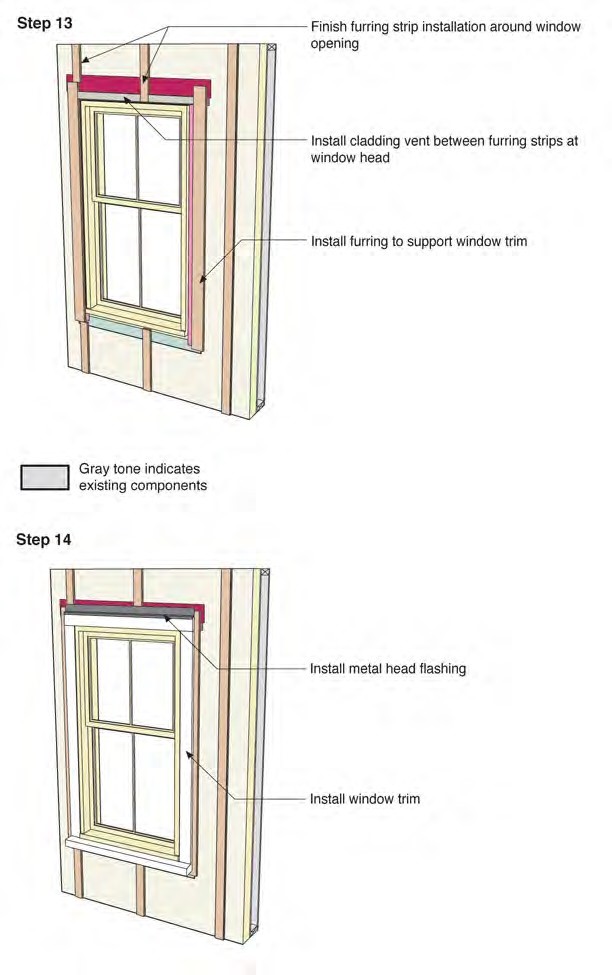
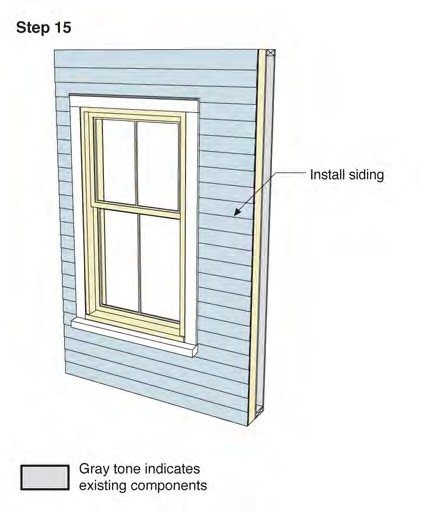
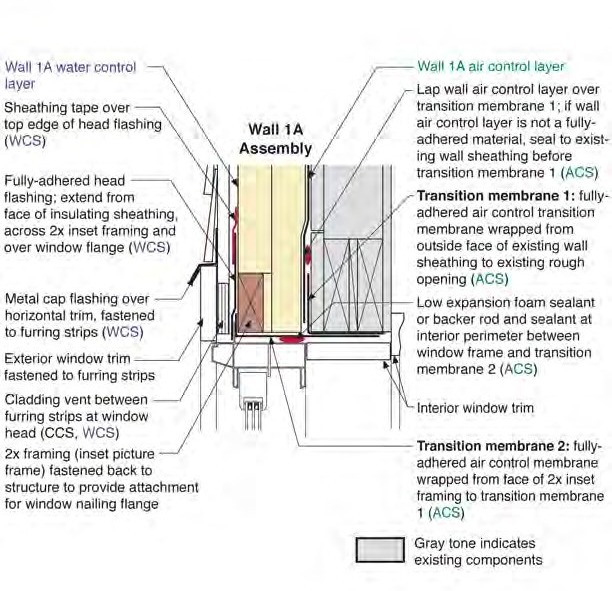
Flanged Window with Inset Picture Frame in Wall 1A-Head
- The window installation sequence for the flanged window with inset picture frame is similar to that shown in Flanged Window with Extension Box in Wall 1A-Installation
Sequence except that Step 0 and Step 3 should be eliminated and Step 4B should be replaced with the installation of the inset picture frame. Also the transition
membrane wrapping from the picture frame into the head of the opening should be
installed after Step 7.
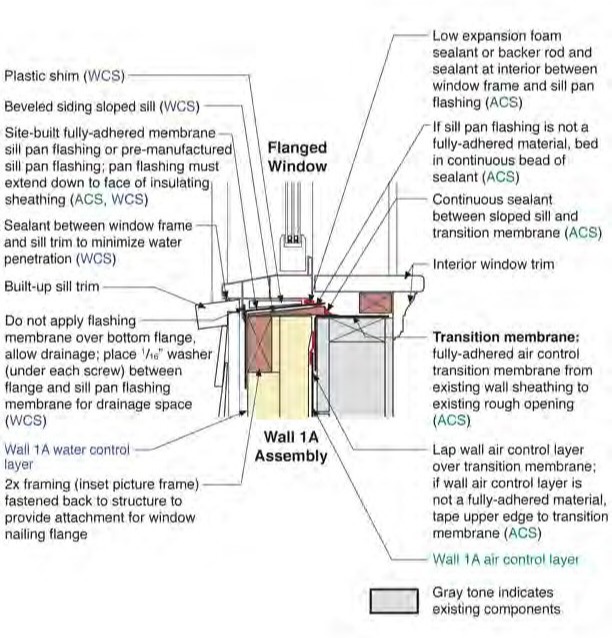
Flanged Window with Inset Picture Frame in Wall 1A-Sill
- The window installation sequence for the flanged window with inset picture frame is similar to that shown in Flanged Window with Extension Box in Wall 1A -Installation Sequence except that Step 0 and Step 3 should be eliminated and Step 4B should be replaced with the installation of the inset picture frame. Also the transition membrane wrapping from the picture frame into the head of the opening should be installed after Step 7.
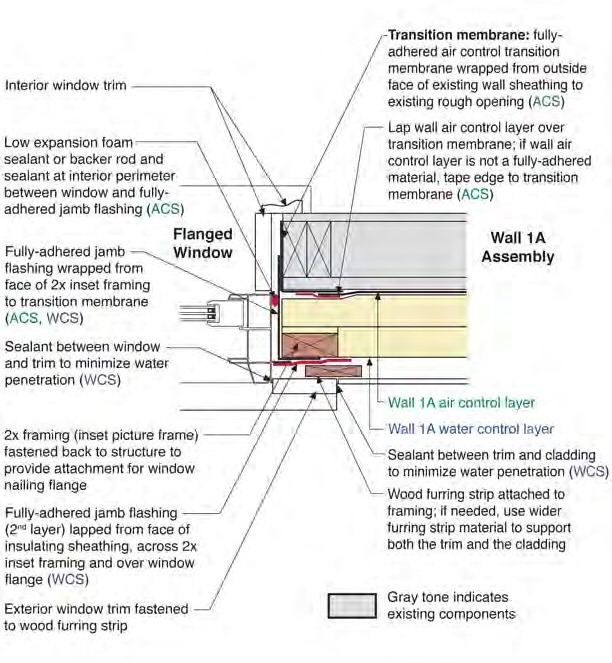
Flanged Window with Inset Picture Frame in Wall 1A-Jamb
- The window installation sequence for the flanged window with inset picture frame is similar to that shown in Flanged Window with Extension Box in Wall 1A- Installation
Sequence except that Step 0 and Step 3 should be eliminated and Step 4B should be replaced with the installation of the inset picture frame. Also the transition
membrane wrapping from the picture frame into the head of the opening should be
installed after Step 7.
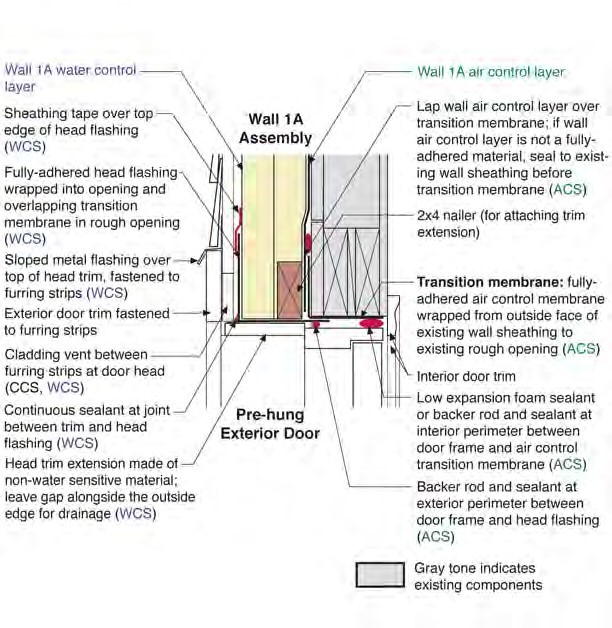
Exterior Door in Wall 1A-Head
- Also see Exterior Door in Wall 1A - Installation Sequence.
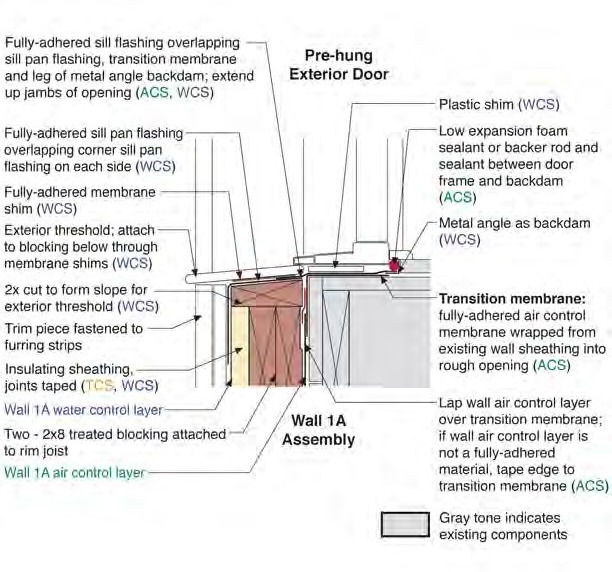
Exterior Door in Wall 1A-Sill
- Also see Exterior Door in Wall 1A - Installation Sequence.
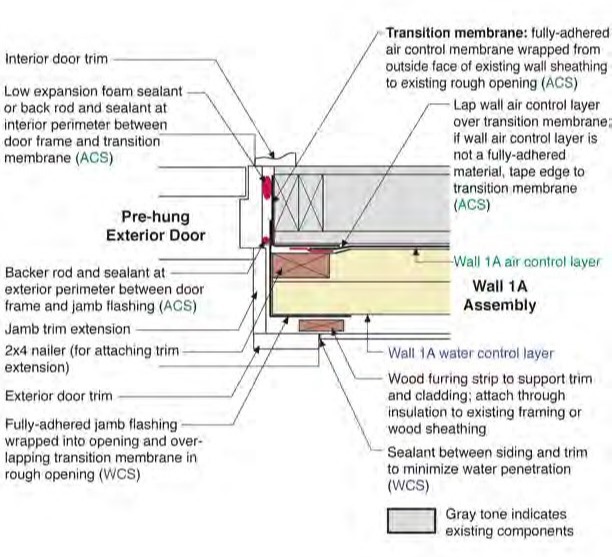
Exterior Door in Wall 1A-Jamb
- Also see Exterior Door in Wall 1A - Installation Sequence.
Exterior Door in Wall 1A-Installation Sequence:
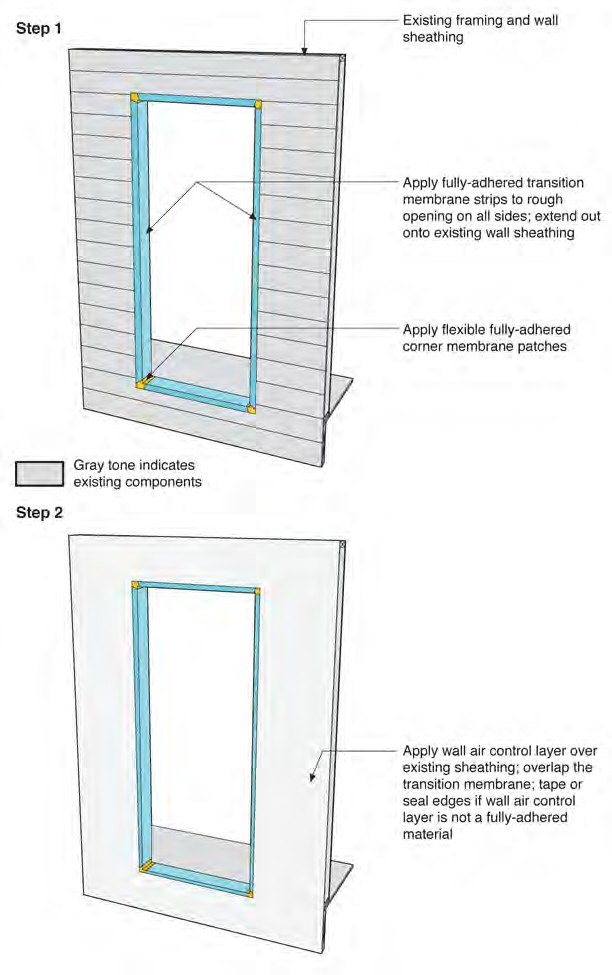
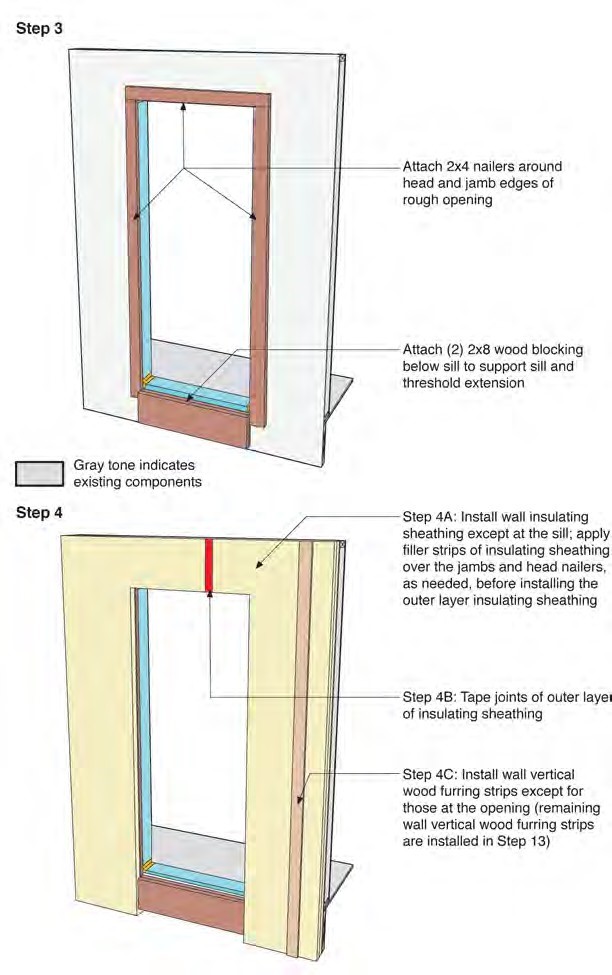
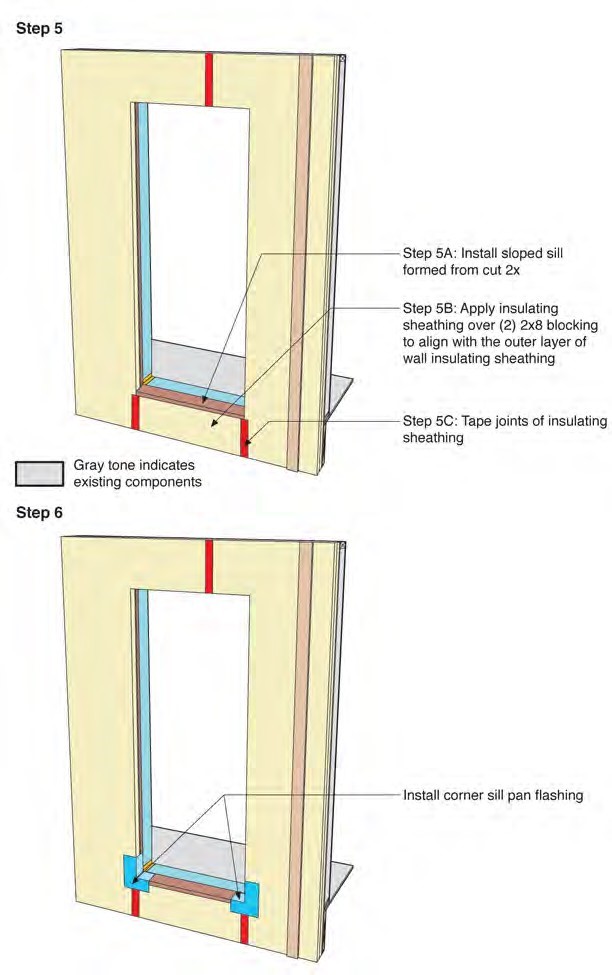
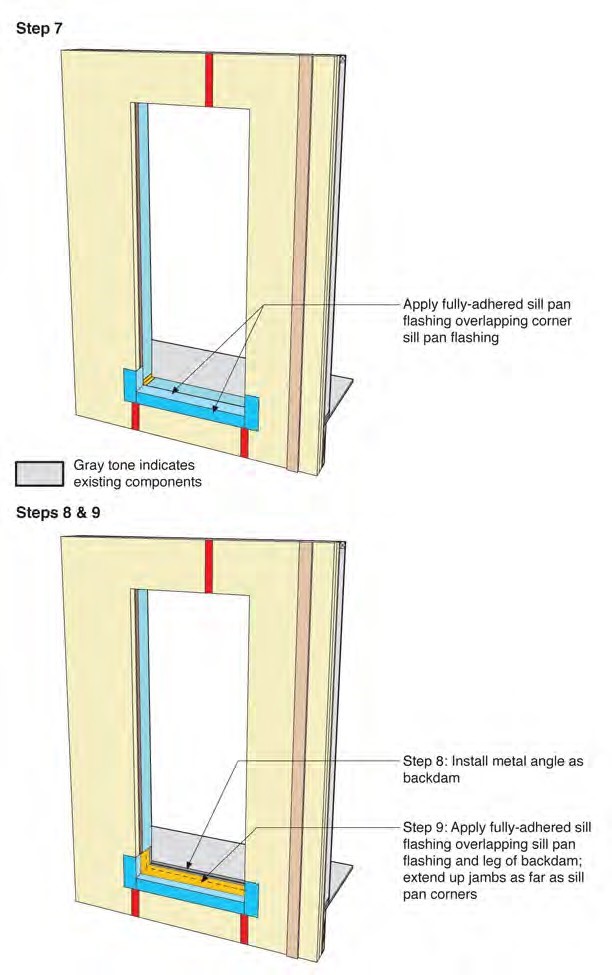
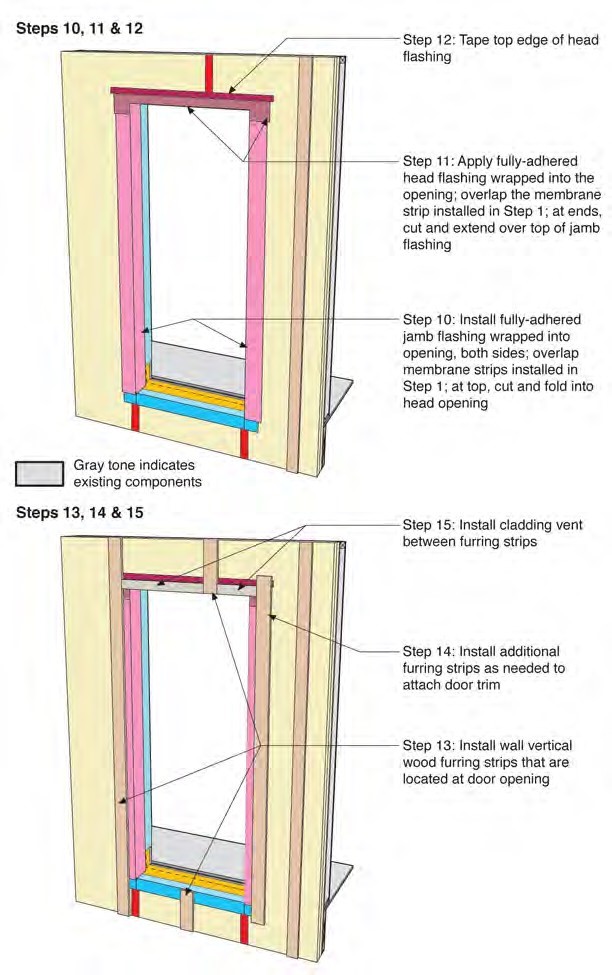

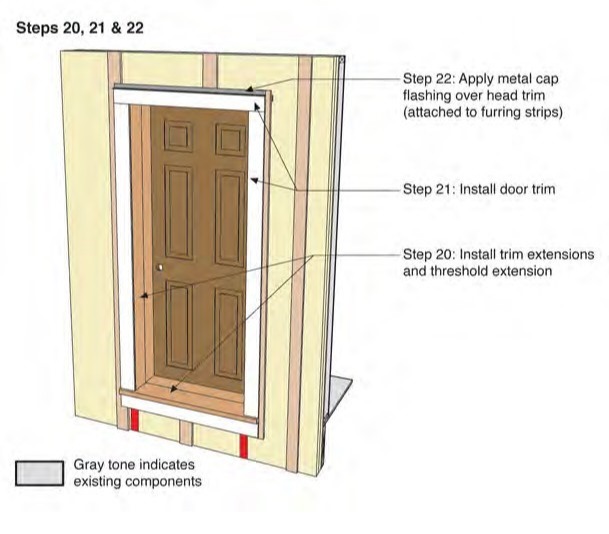
Wall 1A Wire & Duct/Pipe Penetrations
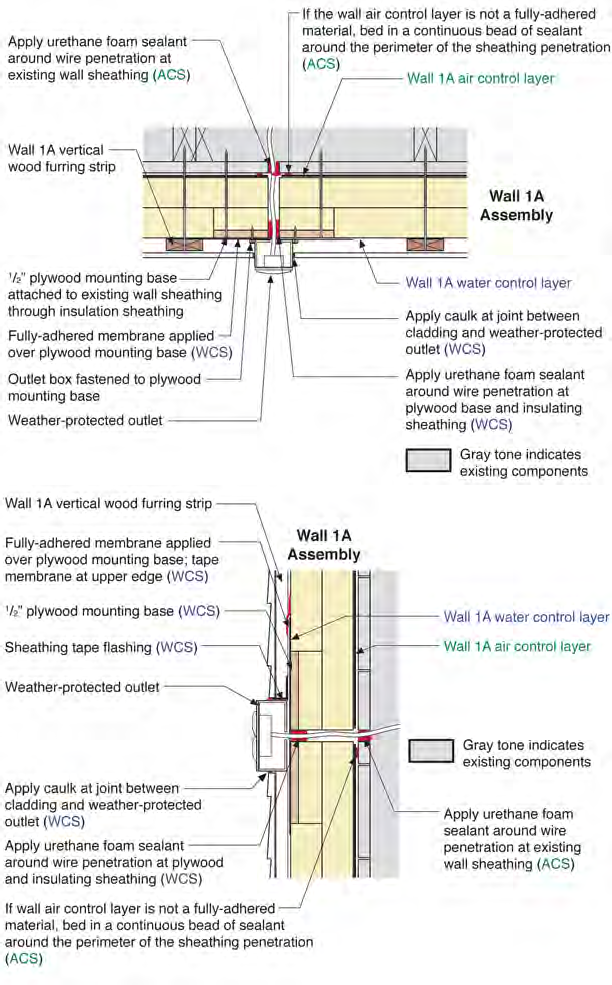
Exterior Electric Box Through Wall 1A-Plan and Section
- Vertical furring strips may be provided as needed for attaching ends of cladding at electric box; leave space for drainage between the box and any added furring strips.
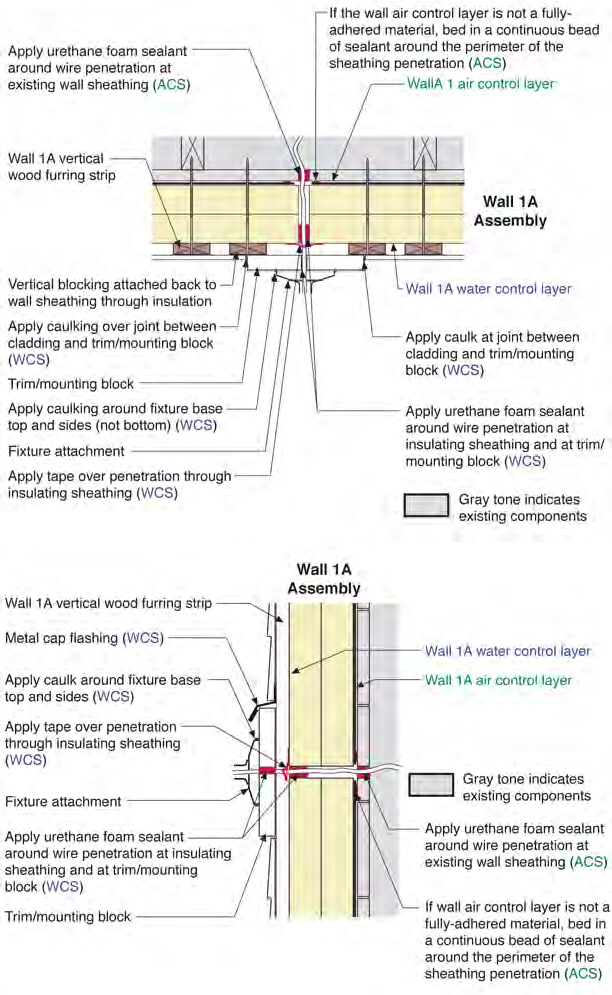
Trim Block with Wire Penetration Through Wall 1A-Plan and Section
- This is for attachment of exterior lighting fixtures or other exterior electrical devices to be installed over a trim block.
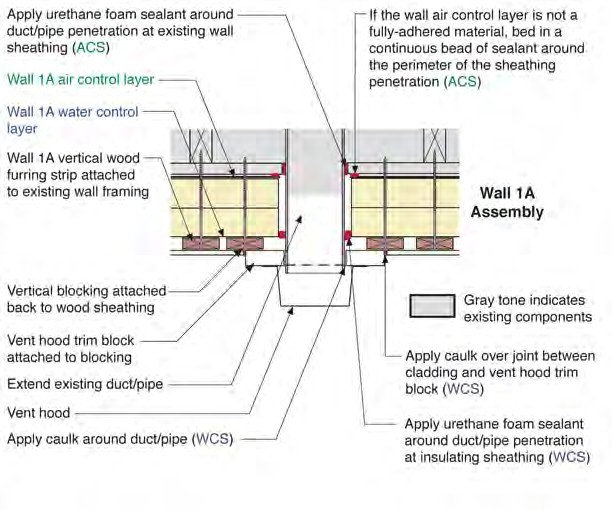
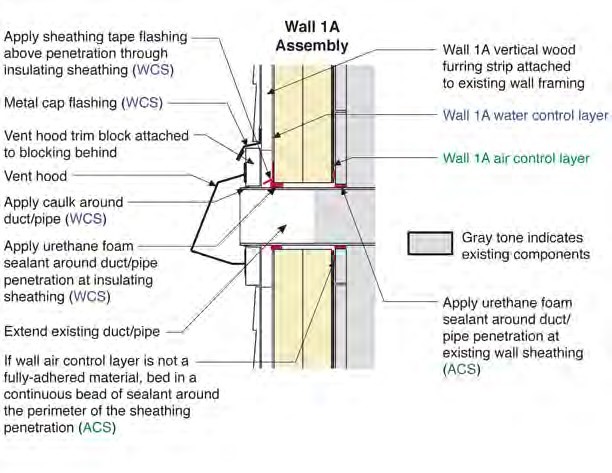
Duct/Pipe Penetration Through Wall 1A-Plan and Section
- Also see Duct/Pipe Penetration Through Wall 1A-Installation Sequence.
Duct/Pipe Penetration Through Wall 1A-Installation Sequence:
